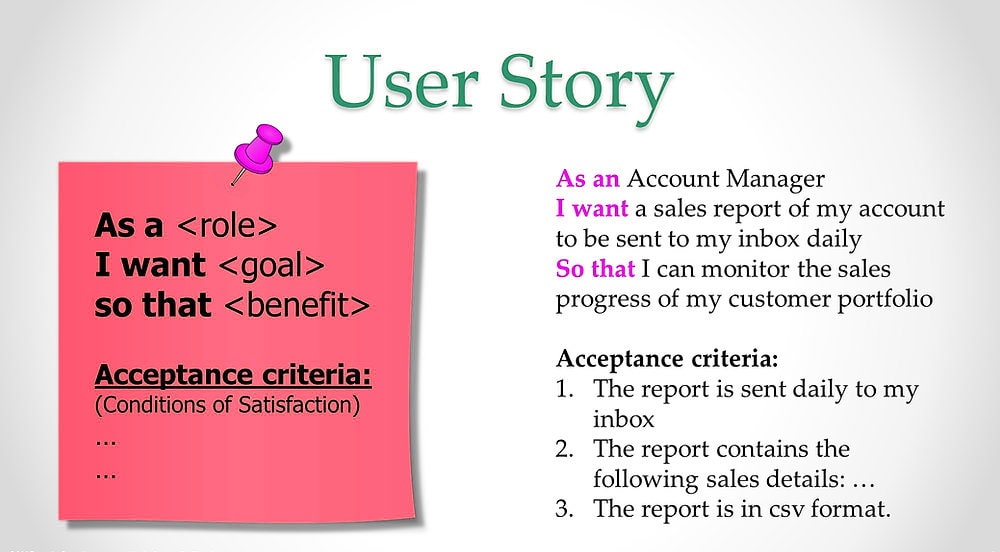User Stories and Acceptance Criteria in Scrum with Examples and Template

Stop Guessing, Start Delivering: Your Free Step-by-Step Guide to Writing User Stories & Acceptance Criteria (with 10 Proven Examples & Template)
With over 8,000 impressions but a dismal 0.13% CTR, it’s clear your audience is searching for this—but your current title isn’t grabbing them. This isn’t just theory. This is your practical, no-fluff toolkit to master User Stories and Acceptance Criteria in Scrum, complete with 10 real-world examples, a downloadable template, and an interactive generator to practice right now.
Understanding User Stories and Acceptance Criteria is the #1 skill for agile teams that ship value, not just code. User Stories capture the “who,” “what,” and “why” from the user’s perspective. Acceptance Criteria define the unambiguous, testable “how” that signals when a feature is truly done. Get them right, and you cut miscommunication, reduce rework, and accelerate delivery.
What is a User Story?
A user story is a brief, simple, and user-centric description of a specific functionality or feature from the perspective of a user or stakeholder. It follows a specific format:
“As a [role], I want [goal] so that [benefit].”
This format forces you to think like the user, focusing on the value delivered, not the technical implementation. It’s written in plain language to spark collaboration between developers, testers, and product owners.
What are Acceptance Criteria?
Acceptance criteria are the specific, detailed, and testable conditions that must be met for a user story to be considered complete and accepted by the product owner. They are your team’s shared definition of “done.”
They turn vague ideas into concrete, measurable outcomes. Think of them as the checklist that ensures everyone—developers, QA, and stakeholders—agrees on what success looks like before a single line of code is written.
Why This Matters
Teams that write clear user stories and precise acceptance criteria ship higher-quality products faster. They spend less time clarifying requirements and more time building the right thing. This guide gives you the exact framework used by top agile teams.
10 Proven User Story Examples (Marketing & Tech Focus)
User Story 1:
As a digital marketer, I want to track campaign performance in real time so that I can make data-driven decisions and optimize strategies for better results.
User Story 2:
As a marketing manager, I want to create targeted audience segments based on demographics and interests so that I can deliver personalized messages and improve campaign engagement.
User Story 3:
As a content creator, I want to schedule social media posts in advance so that I can maintain a consistent presence and effectively engage with my audience across different platforms.
User Story 4:
As a campaign analyst, I want to generate detailed reports on key performance metrics such as click-through rates and conversion rates so that I can assess the effectiveness of marketing efforts and identify areas for improvement.
User Story 5:
As a product owner, I want to integrate marketing automation tools with customer relationship management (CRM) software so that I can streamline lead nurturing and optimize the customer journey.
User Story 6:
As a digital marketer, I want to conduct A/B testing on landing pages and email campaigns so that I can identify the most effective variations and enhance conversion rates.
User Story 7:
As a campaign manager, I want to implement retargeting campaigns to reach users who have previously shown interest in our products or services so that I can increase brand awareness and drive conversions.
User Story 8:
As a marketing team member, I want to collaborate and share assets seamlessly through a centralized content management system so that we can improve workflow efficiency and maintain brand consistency.
User Story 9:
As a digital marketer, I want to implement SEO strategies and optimize website content so that I can improve organic search rankings and attract more targeted traffic.
User Story 10:
As a marketing coordinator, I want to create and manage effective email marketing campaigns, including personalized drip campaigns, to nurture leads and drive conversions throughout the customer lifecycle.
10 Sets of Real Acceptance Criteria Examples (One for Each User Story)
Acceptance Criteria for User Story 1:
1. The campaign tracking system provides real-time data on key performance indicators such as impressions, clicks, and conversions.
2. The campaign performance dashboard displays metrics segmented by various channels and campaigns.
3. The system allows for setting up custom alerts or notifications based on specific performance thresholds.
4. The data visualization capabilities of the tracking system enable easy identification of trends and patterns.
5. The system supports integration with other marketing tools or platforms for comprehensive data analysis.
Acceptance Criteria for User Story 2:
1. The audience segmentation feature allows filtering contacts based on demographic attributes like age, location, and gender.
2. The system provides options to create dynamic audience segments based on user behavior and interests.
3. The targeted messaging functionality allows the personalization of content based on audience segment attributes.
4. The system offers to report on audience segment performance and engagement metrics.
5. The audience segmentation process is intuitive and user-friendly, requiring minimal technical expertise.
Acceptance Criteria for User Story 3:
1. The scheduling feature enables the selection of specific dates and times for publishing social media posts.
2. The system supports scheduling posts across multiple social media platforms simultaneously.
3. The scheduled posts are automatically published at the designated times without any manual intervention.
4. The system provides a clear overview of the scheduled posts and their corresponding platforms.
5. The scheduling functionality allows for editing or rescheduling posts as needed.
Acceptance Criteria for User Story 4:
1. The reporting system generates comprehensive reports with key performance metrics such as click-through rates and conversion rates.
2. The reports provide detailed insights into the performance of different marketing campaigns or initiatives.
3. The system allows for customizing report parameters and selecting specific time ranges for analysis.
4. The reports offer visual representations, such as graphs or charts, for easy data interpretation.
5. The reporting functionality supports exporting reports in various formats for sharing or further analysis.
Acceptance Criteria for User Story 5:
1. The marketing automation tools integrate seamlessly with the chosen CRM software.
2. The integration enables automatic synchronization of lead data between the marketing automation and CRM systems.
3. The system allows for setting up personalized email workflows triggered by specific customer actions or attributes.
4. The integration facilitates tracking and reporting on the effectiveness of lead nurturing efforts.
5. The marketing automation tools provide analytics and insights on customer interactions within the CRM system.
Acceptance Criteria for User Story 6:
1. The A/B testing functionality allows the creation of different variations of landing pages and email campaigns.
2. The system evenly distributes traffic or recipients among the variations for accurate comparison.
3. The A/B testing process automatically determines the winning variation based on predefined success metrics.
4. The system provides statistical significance analysis to ensure reliable results.
5. The A/B testing results are easily accessible and provide insights into the performance of each variation.
Acceptance Criteria for User Story 7:
1. The retargeting campaign setup allows defining specific criteria for targeting users who have shown previous interest.
2. The system tracks and logs user interactions to accurately identify retargeting candidates.
3. The retargeting ads are displayed to the targeted users across relevant channels or platforms.
4. The system provides reporting on the effectiveness of the retargeting campaigns, including impressions and conversions.
5. The retargeting campaign settings are customizable and allow for optimization based on performance metrics.
Acceptance Criteria for User Story 8:
1. The content management system provides a centralized repository for storing and organizing marketing assets.
2. The system supports seamless collaboration among team members, allowing simultaneous editing and version control.
3. The content management system offers search and filtering capabilities for easy asset discovery.
4. The system ensures consistent branding by enforcing access restrictions and maintaining approved templates.
5. The system integrates with other marketing tools or platforms for efficient asset sharing and distribution.
Acceptance Criteria for User Story 9:
1. The SEO strategies involve optimizing website content based on relevant keywords and search intent.
2. The system provides recommendations or suggestions for improving on-page SEO elements, such as meta tags and headers.
3. The optimized website content yields higher organic search rankings for targeted keywords.
4. The system offers analytics and reporting on organic search traffic and keyword performance.
5. The SEO optimization process follows industry best practices and guidelines for sustainable results.
Acceptance Criteria for User Story 10:
1. The email marketing campaign creation process allows for personalized content and dynamic variables.
2. The system provides a user-friendly email builder with drag-and-drop functionality and customizable templates.
3. Email campaigns can be automated with triggers based on specific customer actions or time-based sequences.
4. The system tracks email open rates, click-through rates, and conversion rates for effective campaign measurement.
5. The email marketing functionality integrates with CRM or lead management systems for streamlined lead nurturing and tracking.
NOTE: There is flexibility in the number of criteria per user story; it doesn’t have to be limited to exactly five. The number of acceptance criteria can vary, depending on the complexity and specificity of each user story.
Your Free, Interactive User Story & Acceptance Criteria Generator
Stop writing in the abstract. Practice now with our fill-in-the-blank tools.
Tip: Use the format: “As a [user-type], I want to [tasks] so that [goals].”
Tip: Use the format: “Given [context], when [action], then [observable outcome].”
Homework Assignment: Split the Epic
Epic Story: Upgrade User Authentication System
Description: As part of our ongoing effort to enhance security and user experience, we need to upgrade the user authentication system for our mobile banking app. The current system relies solely on username and password authentication, which has proven to be vulnerable to various security threats. The goal of this upgrade is to implement a multi-factor authentication system that provides users with added security while ensuring a seamless login experience.
Your Task: Split this epic into four distinct user stories and write acceptance criteria for each. This is the exact skill top Scrum teams use daily.
Use this template:
User Story 1:
Description: [As a …]
Acceptance Criteria:
1. [Condition]
2. [Condition]
3. [Condition]
User Story 2:
Description: [As a …]
Acceptance Criteria:
1. [Condition]
2. [Condition]
3. [Condition]
User Story 3:
Description: [As a …]
Acceptance Criteria:
1. [Condition]
2. [Condition]
3. [Condition]
User Story 4:
Description: [As a …]
Acceptance Criteria:
1. [Condition]
2. [Condition]
3. [Condition]
Submit your answers to our Facebook Group for feedback!
Master This Skill: Your Next Career Step
Want to go from understanding to mastery? Our Master User Stories for Successful Projects minicourse gives you the exact frameworks, templates, and exercises used by elite agile teams. Learn to write user stories that stakeholders love and acceptance criteria that eliminate ambiguity. Click here to unlock the course now.
Summary: The Power of Clarity
User Stories define the “what” and “why” from the user’s perspective. Acceptance Criteria define the “how” and “when” for the team. Together, they are the foundation of agile success. Use this guide, practice with the generator, and start writing stories that deliver real value.
Click here to learn the advanced techniques and get your free template
